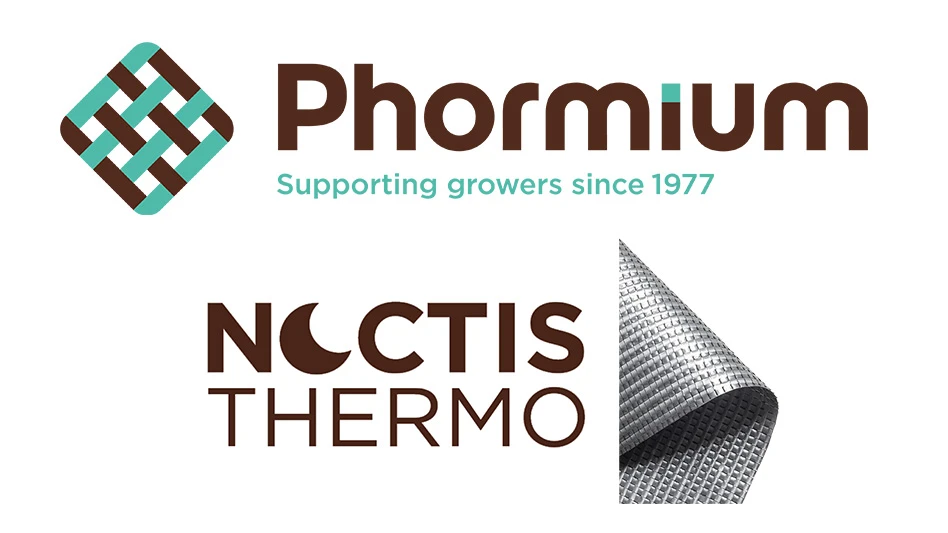
Biological control is a management strategy that entails the release of beneficial insects or mites (natural enemies or biological control agents) such as parasitoids and predators in order to suppress or regulate insect or mite pest populations in greenhouses. Biological control is a regulatory process. Natural enemies will not eradicate an insect or mite pest population. The success of natural enemies is contingent on their ability to maintain insect or mite pest numbers at levels low enough to minimize plant damage and subsequently maintain their own populations.
Biological approaches
The biological control program most commonly implemented in greenhouses is augmentation, which in practice is designed to increase the number of natural enemies by purchasing them from a supplier/distributor and then releasing into the greenhouse. There are two approaches: inundation and inoculation. Inundation refers to releasing “high numbers” of natural enemies (of the same species) in order to quickly suppress an existing insect or mite pest population without relying on the subsequent progeny or next generation to provide any level of suppression. Inoculation is the release of “small numbers” of natural enemies, regularly over a prolonged period of time, with the progeny or next generation expected to regulate or suppress existing insect or mite pest populations.

Types of beneficial insects and mites
There are two distinct categories of beneficial insects and mites: specialist and generalist. Specialist natural enemies, which are usually parasitoids, feed on or attack only one insect or mite prey, or particular life stage (egg, larva, nymph, or adult) of a given prey. Generalist natural enemies, however, feed on or attack a variety of insect or mite prey, and also feed on different life stages (egg, larva, nymph, and/or adult) of a particular prey. In general, beneficial insects and mites must possess good searching efficiency and be able to locate prey in patches or localized areas on plants. Furthermore, for natural enemies to succeed, they must be able to reproduce and have similar development times (from egg to adult) as the subsequent prey.

Parasitoids and predators
Parasitoid adult females insert an egg into or on the body of an insect pest that hatches into a young larva, which consumes the internal contents. Parasitoids that attack aphids cause the aphids to expand in size and turn a light-brown color. These are referred to as “mummified” aphids. Eventually, the parasitoid larva pupates and develops into an adult that creates an opening in the dead insect. The adult emerges, mates, and then the female disperses to attack other insect pests within the surrounding area. Female parasitoids, depending on the species, can lay up to 200 eggs during their lifetime; however, they do not kill insect pests immediately. Most parasitoids are specific in regards to insect pest species and may only attack certain life stages. Parasitoids can be purchased from commercial suppliers/distributors that are shipped in containers, which are placed among the crop in the greenhouse or on cards that are attached to plants.
Predators consume portions of (or the entire) insect or mite pest. In addition, many predators feed on all life stages including eggs, larvae/nymphs, pupae and adults. Predators feed on and kill more than one prey, kill prey quickly, and feed on a diversity of prey types. Although, this depends on the specific predator. The most commonly used predators in greenhouses are predatory mites.
Types of predatory mites
There are three types of predatory mites: I, II and III. Type I is specialist predatory mites that only feed and survive on the twospotted spider mite (Tetranychus urticae). An example of a Type I predatory mite is Phytoseiulus persimilis. Type II is selective predatory mites, which includes Neoseiulus californicus and Neoseiulus cucumeris that feed on a broad range of prey and will also feed on pollen as a supplemental food source. Type III is predatory mites that feed on a very broad range of prey, including eriophyid mites (cigar-shaped mites with four legs), broad mite (Polyphagotarsonemus latus) and cyclamen mite (Phytonemus pallidus). Examples of Type III predatory mites include Amblyseius swirskii and Neoseiulus californicus (Some predatory mites may overlap in regards to type). There are predatory mites for use against aboveground pests, including the western flower thrips and twospotted spider mite, and belowground pests such as fungus gnats. Predatory mites can be purchased from commercial suppliers/distributors in containers, sachets, or holding packets that are directly attached to plants or containers, which may be useful for hanging baskets.

Conclusions
There is more interest in using beneficial insects and mites because of concerns affiliated with insect and mite pest populations that have developed resistance to commonly used insecticides and miticides, and the issues associated with neonicotinoid systemic insecticides and supposed impacts on pollinators. However, the use of beneficial insects and mites requires a different mindset compared to using pesticides. Therefore, greenhouse producers should consult with state or university-based extension personnel (horticulture or entomology) on how to develop a successful biological control program.

Explore the January 2016 Issue
Check out more from this issue and find your next story to read.
Latest from Greenhouse Management
- This month's Greenhouse Management magazine is about native plants and sustainability
- The HC Companies, Classic Home & Garden merge as Growscape
- Terra Nova releases new echinacea variety, 'Fringe Festival'
- Eason Horticultural Resources will now officially be known as EHR
- BioWorks receives EPA approval for new biological insecticide for thrips, aphids, whiteflies
- ScottsMiracle-Gro transfers cannabis subsidiary to focus on core lawn and garden business
- Should we start calling natives 'eco-beneficial plants'?
- Ellen Mackenbach-Lakeman appointed new CEO of Dümmen Orange





